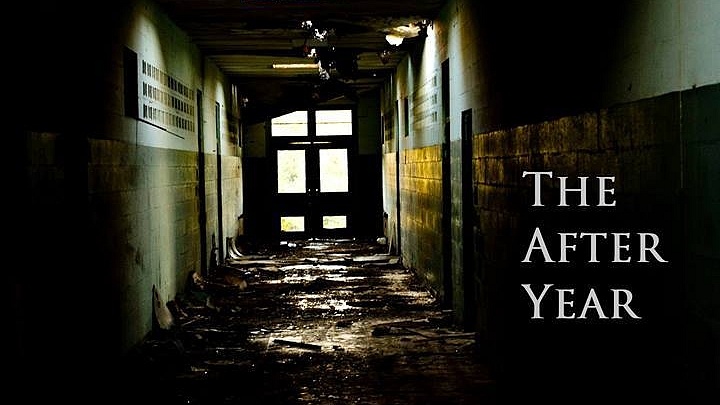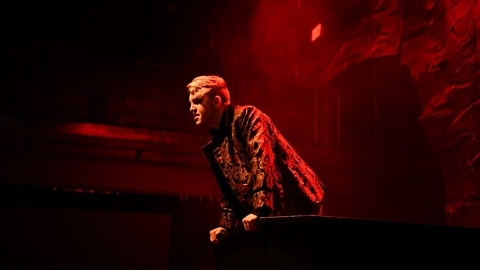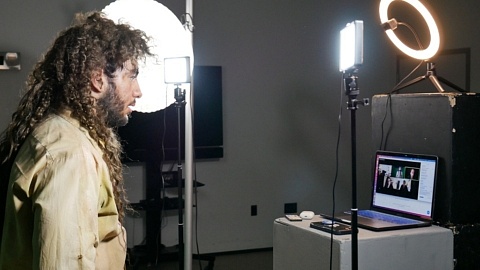For nearly two years, theatre lovers have felt entrapped in their own little purgatories. Artists have been unable to perform on stages, and audiences been...
Critic in residence Nicholas Leno writes,
In the not too distant future our over-populated planet is nearly wiped out by a deadly super-virus that kills its hosts in their sleep. A year has passed since the virus’ spread, and Jackson, hero of Dragonfire Players’ new show The After Year, leads a group of survivors as they attempt to endure the hardships of their new post-apocalyptic life.
On Saturday, Hayley and I sat down with Anna MacAlpine and Tanisha Minson of Dragonfire Players for the first interview of my 2014 In The Soil Arts Festival coverage. MacAlpine and Minson, along with their team of actors, have constructed an unusual story in a very unusual way.
The Year After sets itself apart from other apocalypse stories through its exploration of relationships and the need for human interaction. “Forget about the actual physical logistics of surviving an apocalypse,” says co-creator Minson – their story explores what happens to a person’s understanding of themselves and others when they inhabit a world without rules.
For playwright and actor MacAlpine, the question of survival is not rooted in violence or in battling the world’s deadly natural forces, but a question of “What is art now that the world has ended?” Her characters pursue past times and pleasures, such as reading books or playing make-believe, as a means of escaping their terrifying realities. The After Year calls on the genres of fantasy and science fiction, where elaborately detailed stories of other worlds allow us to escape the hum drum of daily life. MacAlpine shows a love for the tropes of science fiction, not only through the construction of her own intricate world, but through her character’s employment of stories to escape the world around them. The Year After explores the resiliency of the human mind and its ability to keep one’s spirit alive even in a time of crisis. As Minson says, “If a group of people are going to survive, that’s the most important part, keeping their humanity alive along the way.”
What’s interesting about the Dragonfire Players is their creation process. Through improvisation and exploration, what started as a “collective brainchild” between MacAlpine and Minson grew into a body of work that informed MacAlpine’s writing process. “The whole company does get to help write,” says Minson. Although MacAlpine drafts scenes and does her rewrites alone, the entire company is encouraged to give feedback and inform MacAlpine of their character’s position within the story. Ultimately choices of story construction lie in MacAlpine’s hands, but she admits, “As a writer I have to play all six characters, but because I’m spread throughout six characters I can’t be as in-depth into one character’s head as an actor is, because they only have to focus on that one character’s brain.”
It seems to me that MacAlpine is certainly a brave playwright, releasing a piece of text into an actor’s hand before it is completely finished. Then again, improvised work with actors allows MacAlpine to take home new discoveries and revise with the added insight of the whole company. This level of collaboration requires complete trust in the ensemble’s ability to explore MacAlpine and Minson’s world, and both creators agree they could not have undertaken such an enormous task with just any group of actors.
But the collaboration doesn’t end with just the writing! MacAlpine and Minson pushed their ensemble’s method of free discovery even further by releasing the central role of a director. “We wanted everyone to be able to act, so we do internal directing,” MacAlpine said. Every company member is responsible for their own discoveries and informing their own acting; occasionally members step out of a scene to ensure a stage picture is being constructed effectively. Minson explains, “We don’t have someone sit down with their script and tell people where to go.” Blocking is established through the actors’ impulses or where they feel they need to be in the moment. While all finial decisions do go through Minson and MacAlpine, the actors have a large amount of choice not only in the construction of the story but in the way it’s told.
While the creators enjoyed the challenges posed by the process immensely, they both acknowledge having their share of difficulties and even admit to preferring the structure of a single director. But what really makes a project like this possible is the shared vocabulary and knowledge of acting the company has gained through their time in the Dramatic Arts program at Brock University. “I don’t think we would’ve been able to use this method with people we didn’t know or who didn’t have the same training as us,” Minson speculates. Through their years of working together as students at Brock, the company has already formed the foundation of trust needed to self-direct. The creators are grateful for the high quality of education they received from Brock’s committed instructors, and for the continuous encouragement Brock and the surrounding theatrical community has given them in pursuing their goals as local theatre makers. “It’s not about being better or getting more people out to your show, it’s just pure creation that people seem to value in this area,” Minson concludes. It was a great way to end an interview, and an even better way to kick off my In The Soil Arts Festival coverage – let the celebration of local art begin!
The After Year will be playing April 25-26 at the Sullivan Mahoney Courthouse Theatre.
Friday April 25 at 7pm
Saturday April 26 at 4pm
Admission is $10 a Festival Pass
Related Posts
The Brock Dramatic Arts department’s fourth year students have been working hard on their final production of this academic year. Ouroboros is a piece of...
What’s the best way to describe Sheila Callaghan’s play Fever/Dream? Simply put by actor Joanna Tran: “like a fever dream.” Director Gyllian Raby...
The Brock Dramatic Arts department’s fourth year students have been working hard on their final production of this academic year. Ouroboros is a piece of...
What’s the best way to describe Sheila Callaghan’s play Fever/Dream? Simply put by actor Joanna Tran: “like a fever dream.” Director Gyllian Raby...
One Comment
Leave a Reply (Cancel Reply)
Twitter Feed
Blogroll
DARTcritics.com is partially funded by the Marilyn I. Walker School of Fine and Performing Arts, in support of student learning; experiential education; student professionalization; public engagement with the teaching, learning and production activities of the Department of Dramatic Arts; new ways of thinking; and the nurturing of links with our communities.






Pingback: The After Year Reaches London Fringe | DARTcritics